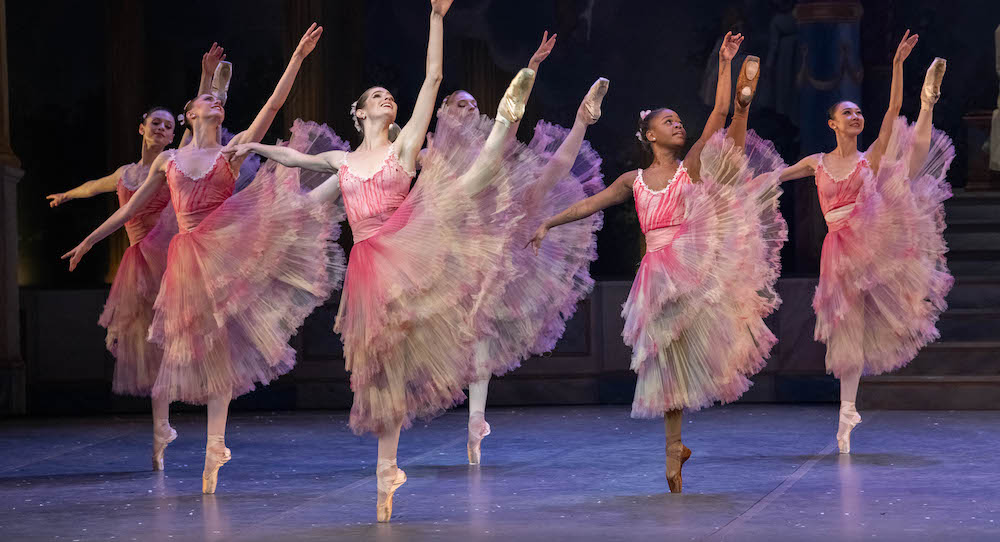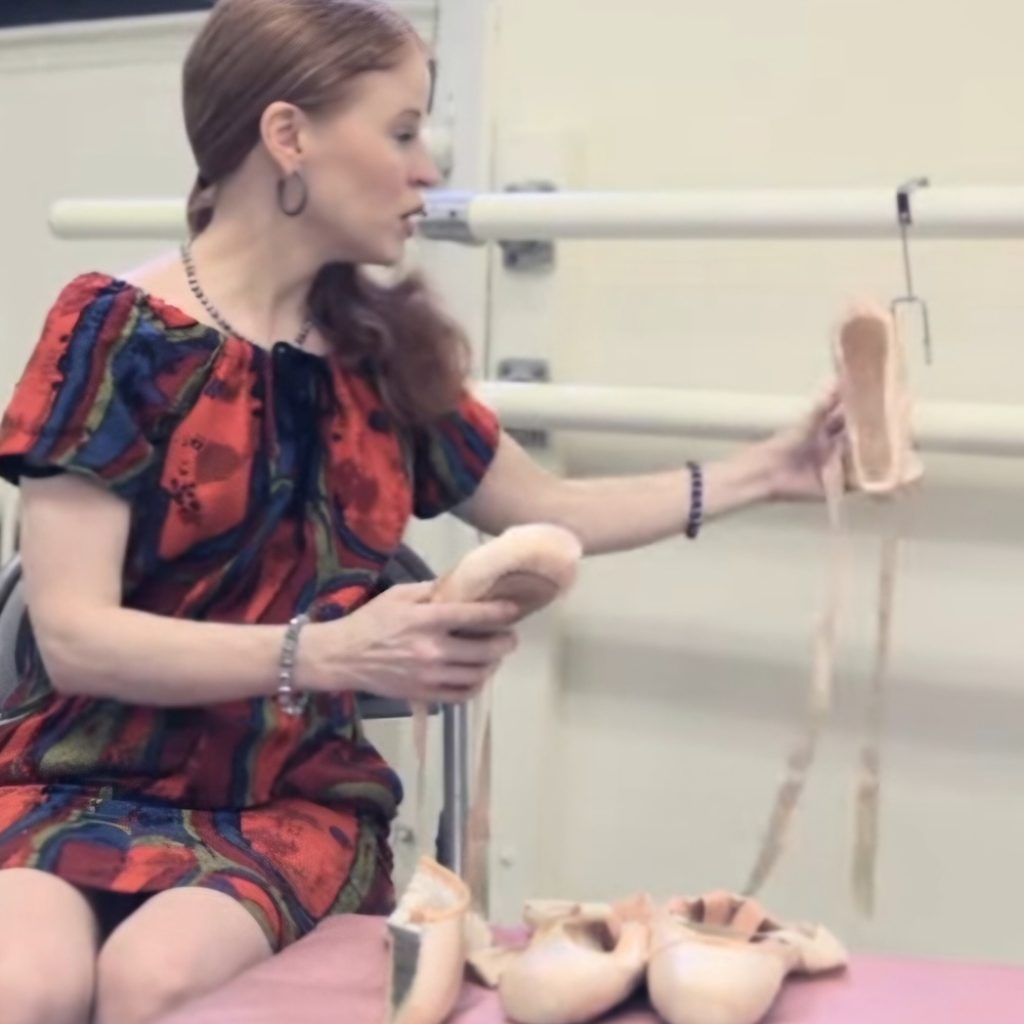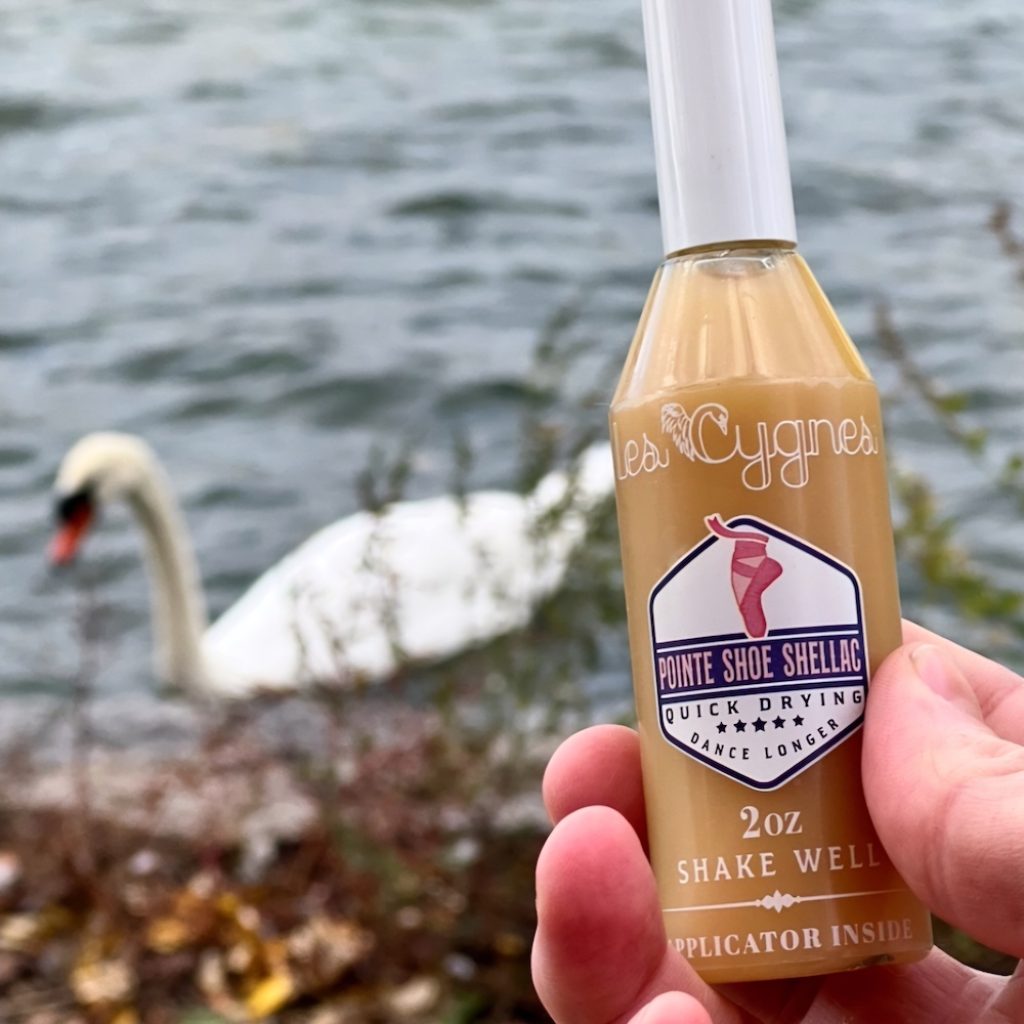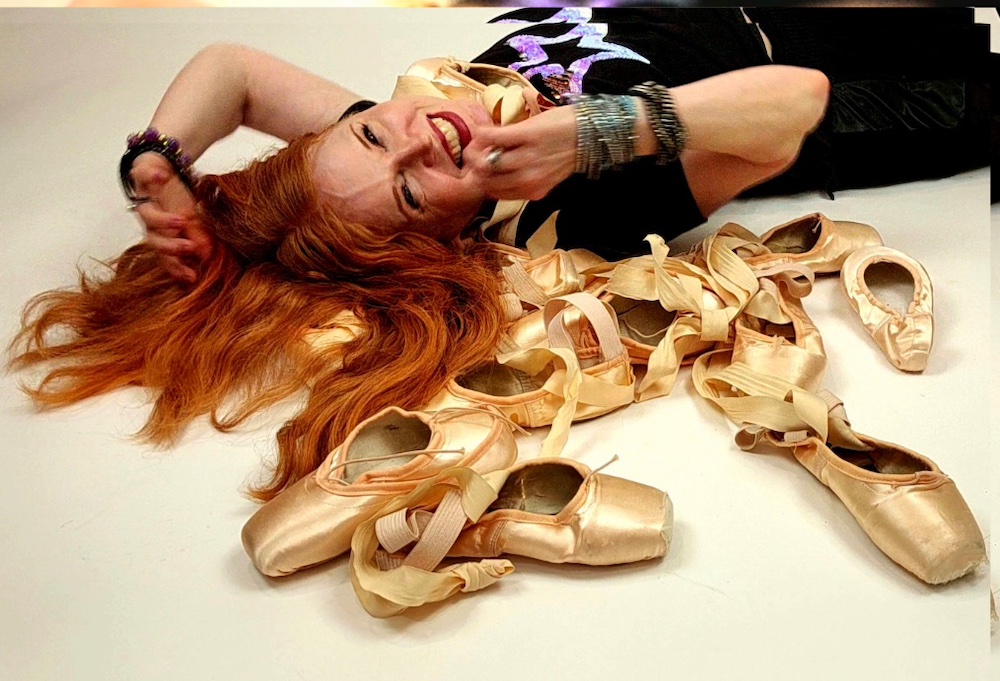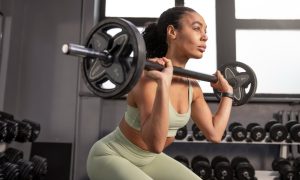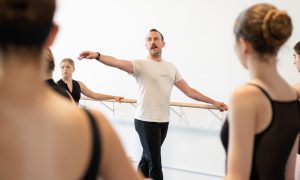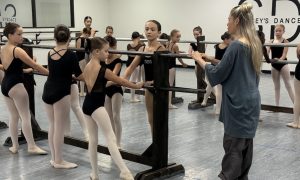A superb pair of pointe shoes can help you dance your best. When you find the perfect pair, it feels magical. So, how do you make the magic last? With The Nutcracker right around the corner, you want your favorite pair to take you all the way through to the final curtain. Here are some helpful tips to keep you on your toes.
First and foremost, the shoes need to fit correctly. If your shoes don’t fit, they will break in faster. The shoes should be an extension of your body, fit like a glove, and move with you. The bigger your shoe is, the more that can go wrong. The foot can slide around, and the shifting causes misalignment. This puts undue pressure on the materials of the shoe. Visit the social media of any famous ballet dancer and take a look at how their shoes fit. Notice the sleek lines and how the shoes seem to disappear into the body, as opposed to looking like sneakers.
Make sure your technique and strength are up to the challenge. You want to dance from your core, rather than just using your feet. The stronger you are, the less you rely on the shoe to get you through. Add extra strength training to your dance regimen. Pilates, Progressing Ballet Technique and resistance training are all designed to help you get aligned and strengthen. Therabands are a lightweight, handy tool that can help build strength in your ankles and feet. Consult with your teachers on which exercises are best for you.
There are a number of contemporary pointe shoes, like Gaynor Mindens, which boast longer staying power. Bloch, Nikolay and R-Class use a hybrid of contemporary materials combined with traditional ones for longer-lasting shoes. It’s worth checking out the latest offerings from pointe shoe brands. Dance Informa covered that in a previous article, New season, new shoes: What’s the latest in the pointe shoe world.
If you prefer to wear shoes made of traditional materials, there are proactive steps you can take. Traditional pointe shoes are made of materials that soften when pressure and moisture are applied. Pointe work puts an immense amount of pressure on the tips of your toes, and just think about how much you sweat during rehearsals and performances. Moisture is the enemy of traditional shoes, so it’s important to dry them out thoroughly and protect them from dampness.
If you can manage it financially, try to get at least three or four pairs at a time and rotate them. Wearing one pair to its demise and then moving on to the next will ultimately break them down faster. Rotating the pairs allows them to rest and dry. To dry the shoes, make sure to remove them from any plastic packaging. Use a mesh bag for transporting them to and from the studio. At the end of the day, hang the shoes on hooks with the tips pointing up — gravity will assist with the drying process. Choose a room with low humidity — a locker room is not ideal. A room with a dehumidifier or dry, cool air is perfect. Keep older pairs of shoes, date them, and place them in the drying position for three months. You’ll be surprised at how much they harden up again. Don’t forget to frequently launder and dry your toe pads.
For waterproofing, there are numerous products designed to strengthen the shoes while also waterproofing them. One popular type of glue is cyanoacrylate. It comes in various brand names: Krazy Glue, Super Glue, Gorilla Glue, Pointe Shoe Glue, Bloch Pointe Shoe Glue, Suffolk Pointe Shoe Glue, Hot Stuff and Jet Glue. When applied correctly, the glue bonds to the material in the shoe while waterproofing and hardening it at the same time. It’s important to get fast-set glue, as the slow-set variety is more like a gel and won’t be absorbed by the shoe’s layers.
For the best results when applying the glue, make sure you are in a well-ventilated room and wear gloves. If you do get any glue on your skin, use nail polish remover to gently wipe it off. Glue the shoes when they are dry, not wet from class. If the shoes have any moisture in them, the glue will bond to the water rather than absorb into the pointe shoe layers. Avoid applying the glue in thick layers, as that will only make it harder to dance. Pretend you are painting a fine work of art and apply light layers. Allow each layer to dry before adding more. You can continue to apply layers of glue throughout the shoe’s lifespan.
If you’re concerned about toxic odors from cyanoacrylates, there’s a good alternative called Pointe Shoe Shellac. It comes in a convenient two-ounce bottle with an applicator wand. The shellac is lightweight and should be applied in one to three coats. It won’t cut into your skin when used on the inside of the shoe. An added bonus is that the shelf life of the shellac is one to three years.
You may find it beneficial to wear different brands of pointe shoes for different roles. The fast bourrées in the snow corps and supple rolling-through in the Arabian section have different shoe needs. Wear a harder, sturdier brand for anything with multiple relevés, and a more pliant shoe for sections with lots of running, standing and smooth roll-throughs. If you have time, changing shoes throughout the performance can help keep a favorite pair from breaking down too soon.
Be diligent and plan ahead. No dancer wants to be frantically sewing up a new pair of shoes during the opening overture. The maintenance of your shoes is time-consuming, but it’s important. With the cost of a pair of pointe shoes ranging between $80 and $120, you should make it a priority to treat them like gold. Your feet — and your wallet — will thank you.
By Mary Carpenter of Dancewithmary NYC.
Mary Carpenter is a former professional ballet dancer who began her studies at CCM, the official school for the Cincinnati Ballet Company, and was on scholarship at the David Howard Dance Center. Mary also holds a BA with high honors in dance from Butler University. She has danced for the Metropolitan Opera Ballet, Ohio Dance Theatre, Granite State Ballet, Maryland Ballet, Lexington Ballet and Charleston Ballet, and performed in numerous off-Broadway shows. Mary has contributed to the dance community as a dedicated instructor in ballet, Pilates and Progressing Ballet Technique (PBT), and served on the faculty of Broadway Dance Center, the Ballet Hispánico School of Dance, Barnard College and The New School University. She is current faculty for Ballet Academy East and the world-famous Steps on Broadway. Her classes for adult beginners are available virtually on the Dancio.com website. With over three decades of experience, Mary has become a highly skilled pointe shoe fitter. She has worked with dancers from prestigious companies such as American Ballet Theatre (ABT), The Royal Ballet and New York City Ballet. Her expertise in fitting pointe shoes has led her to give lectures at renowned summer programs, including ABT/JKO, Dance Theatre of Harlem, NYSSSA and Oklahoma Summer Arts in Quartz. In 2015, Mary launched her YouTube channel, “Dancewithmary NYC,” where she shares her knowledge and expertise on pointe shoes through monthly segments. Her channel has become a valuable resource for dancers and teachers seeking guidance and advice.


